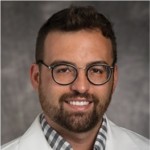During these turbulent times, the people charged with healing the sick might require compassionate help themselves
By Jason Langendorf
Healthcare professionals with opioid use disorder (OUD) should have access to opioid agonist treatment and maintain the right to practice if they are not deemed impaired to perform their duties, a recently released statement from the American College of Medical Toxicology (ACMT) argues.
There were more than 81,000 overdose deaths in the United States in the 12 months ending in May 2020—the highest number ever recorded across a 12-month period—and provisional data through January 2021 suggests that figure continued to reach new heights month over month into the new year. By now, we know that the overlap of this crisis with another—the COVID-19 pandemic—is no coincidence. The unique stressors and challenges of COVID have, in fact, been a driver of substance use and a barrier to treatment.
In the past two years, we’ve seen a lot of increasing burnout and people—just generally, not necessarily in healthcare—turning more and more to substances. So, this is definitely a relevant thing to the pandemic.”—Ryan Marino, Medicine Bridge Clinic in Cleveland
The Plight of Healthcare Workers
Meanwhile, perhaps no group has been pushed harder during this time than healthcare professionals, who, the ACMT statement notes, experience substance use disorder (SUD) at a rate roughly equivalent to that of the general population. Ryan Marino, M.D., medical director of Toxicology & Addiction at the Medicine Bridge Clinic in Cleveland and lead author of the ACMT statement, sees no reason why healthcare workers would be immune to addiction.
“I think one thing the public doesn’t realize is that people who work in healthcare, whoever they are—therapists, doctors, nurses, EMS—are all people at the end of the day,” says Marino, a medical toxicologist who has a dual appointment in psychiatry. “That’s why [their] substance use rates are very similar to the general population.
“In the past two years, we’ve seen a lot of increasing burnout and people—just generally, not necessarily in healthcare—turning more and more to substances. So, this is definitely a relevant thing to the pandemic.”

In the ACMT statement, Marino and his co-authors present the prevalence of SUD among healthcare workers as a slice of a larger trend that could have an outsize impact: “Identification and treatment of substance use disorders in HCPs [healthcare professionals] is a public health issue, as their cognition and behavior impact the health of their patients. Provider impairment carries significant risk to patient safety.”
Yet one key assertion reflects the entire objective of the statement: “Opioid use disorder does not equal impairment.” The distinction is important because even in light of the public safety issues tied to healthcare workers using substances, Marino says drawing strict lines related to substance use may tread on right-to-work issues in healthcare settings. “People go home and have a couple glasses of wine after work, and they can still wake up the next morning and go back to work,” he says. “There’s definitely a spectrum of what impairment is.”
The Role of MAT
More controversial, at least to some, is the notion of treating healthcare professionals with OUD using medication-assisted treatment (MAT), specifically opioid agonists such as buprenorphine and methadone. Because opioid agonists bind to the same receptors activated by opioids, many critics believe they can be enabling—the swapping of one drug for another.
Buprenorphine and methadone, however, are widely considered by addiction experts to be the gold standard of OUD treatment, and the ACMT statement argues that healthcare workers deserve access to nothing less. In fact, Marino says MAT may have the opposite effect from the risk of impairment that concerns critics.
“To give another interpretation of this, someone who may be dependent on a medication like methadone or buprenorphine can be in sustained and complete recovery,” Marino says. “And while they still have opioid use disorder, they are very much not impaired. In those cases, the medications actually are probably the main reason that they’re functioning, not impaired.”
How is the treatment and right to practice of healthcare professionals properly balanced against impairment risk and public safety? Who makes those determinations? What is the standard?”
The path forward isn’t simple. How is the treatment and right to practice of healthcare professionals properly balanced against impairment risk and public safety? Who makes those determinations? What is the standard?
The stance of the ACMT is that the fitness of healthcare workers should be evaluated on an individual basis. At the same time, the organization’s statement makes another point clear: “HCPs should not be compelled to choose abstinence or antagonist therapy.” Marino points to the value of physician health programs (PHPs), which emphasize therapy over punitive action, help protect HCPs and, according to the ACMT, “provide the best opportunity for HCPs to recover and serve their communities.”
“The ideal situation would be that the PHP would be intimately involved with both treatment and employment interfaces,” Marino says. “And so whether this means having the state board be involved or someone from the employer organization interface with whoever is supervising this person’s recovery, the PHP should advocate for healthcare professionals at all costs.”
Top photo: Mat Napo














